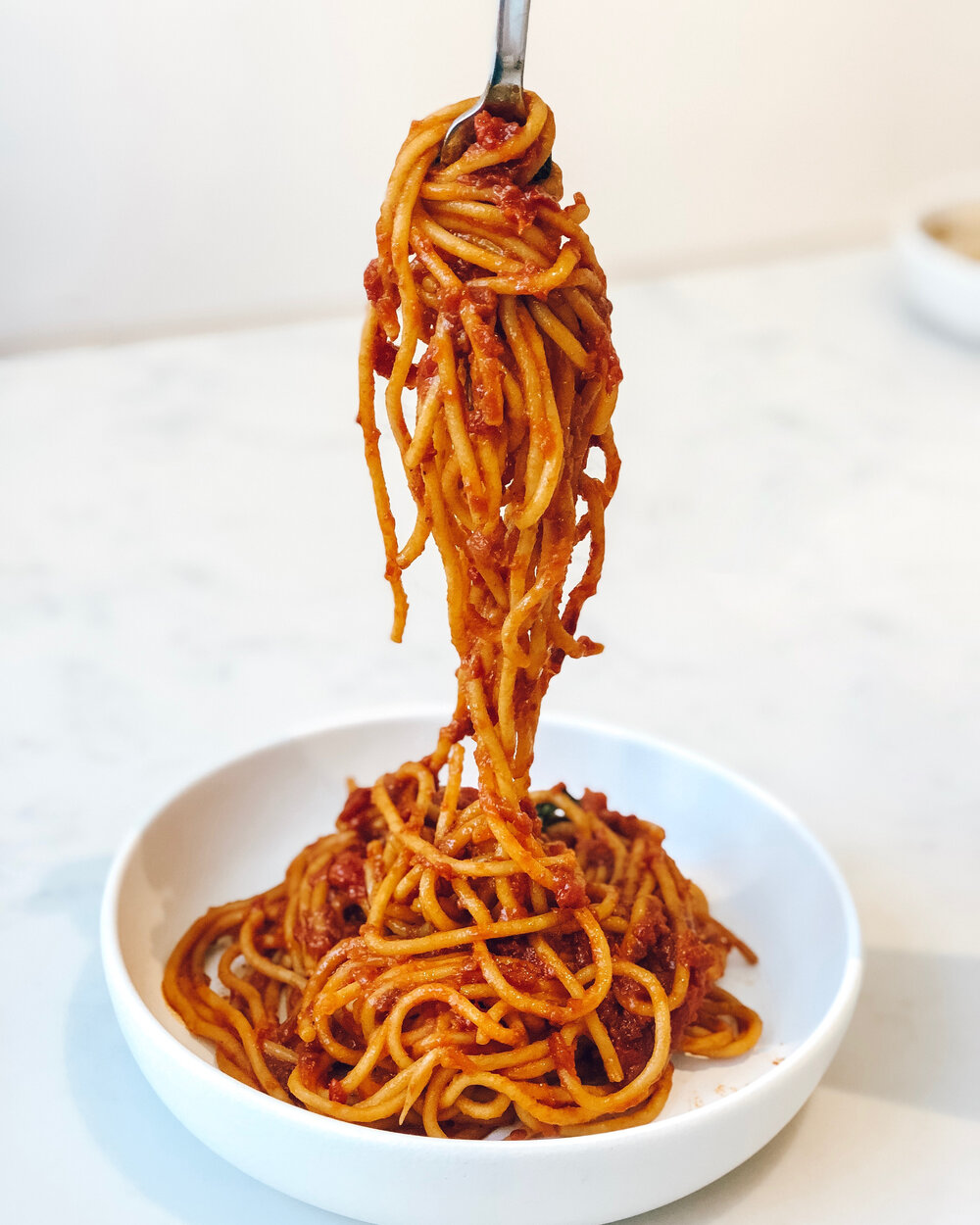
In simple terms, carbohydrate loading or “carb-loading,” is a strategy that endurance athletes, such as runners, cyclists and triathletes use to maximize their performance during a race. It is frequently used for endurance events lasting more than 90 minutes because anything longer will exceed the body’s natural carbohydrate supply. When this happens, athletes commonly “hit the wall,” which is a condition of sudden fatigue and loss of energy. Typically, this occurs in the latter stages of a marathon.
Carbohydrates are one of the three macronutrients (fat, carbohydrate, protein), that provides the body with fuel for energy. There are copious amounts of fat and protein stored in the body, but only a limited supply of carbohydrate, which is mostly stored in the liver and muscles as glycogen. Consequently, the purpose of carbohydrate loading is to systematically increase the intake of carbohydrates in order to extend the body’s supply beyond its normal threshold. Maximizing the body’s glycogen levels will prolong exercise intensity and duration.
Muscle glycogen levels are normally in the range of 100 – 120 mmol/kg wet weight (ww), but this amount fluctuates depending on your level of activity and nutrition. Yet, it is possible to increase muscle glycogen stores above those levels, to 150 – 200 mmol, through the process of carbohydrate loading. The benefit of maximizing muscle glycogen is that it can improve race performance by 1-3%. Initially this may sound marginal, but when you think about a long distance race that lasts many hours, it can improve finishing time by several minutes.
How much and when? Carbohydrate loading requires approximately 3-4 grams of carbohydrates per pound of body weight per day for three to four days! That’s about 500 to 650 grams of carbohydrates for a 165lb athlete. For reference, a large pasta meal only contains approximately 60 grams of carbohydrates. Hence, the mythical night before race meal is inappropriate and inadequate.
Consuming hundreds of carbohydrates in a single day is actually quite difficult. For that reason, it’s best to include easily digestible foods that are low in fiber, as well as drinks that are not filling. The only negative side effect is increased weight gain due to water retention, but it’s important to remember that this is more than offset by the gain in extra fuel/energy during the race.
Recommended Food for Carbohydrate Loading
• Bread
• Bagels
• Rice
• Cereal
• Sport Drinks
• Fruit Juice
• Bananas
• Pasta